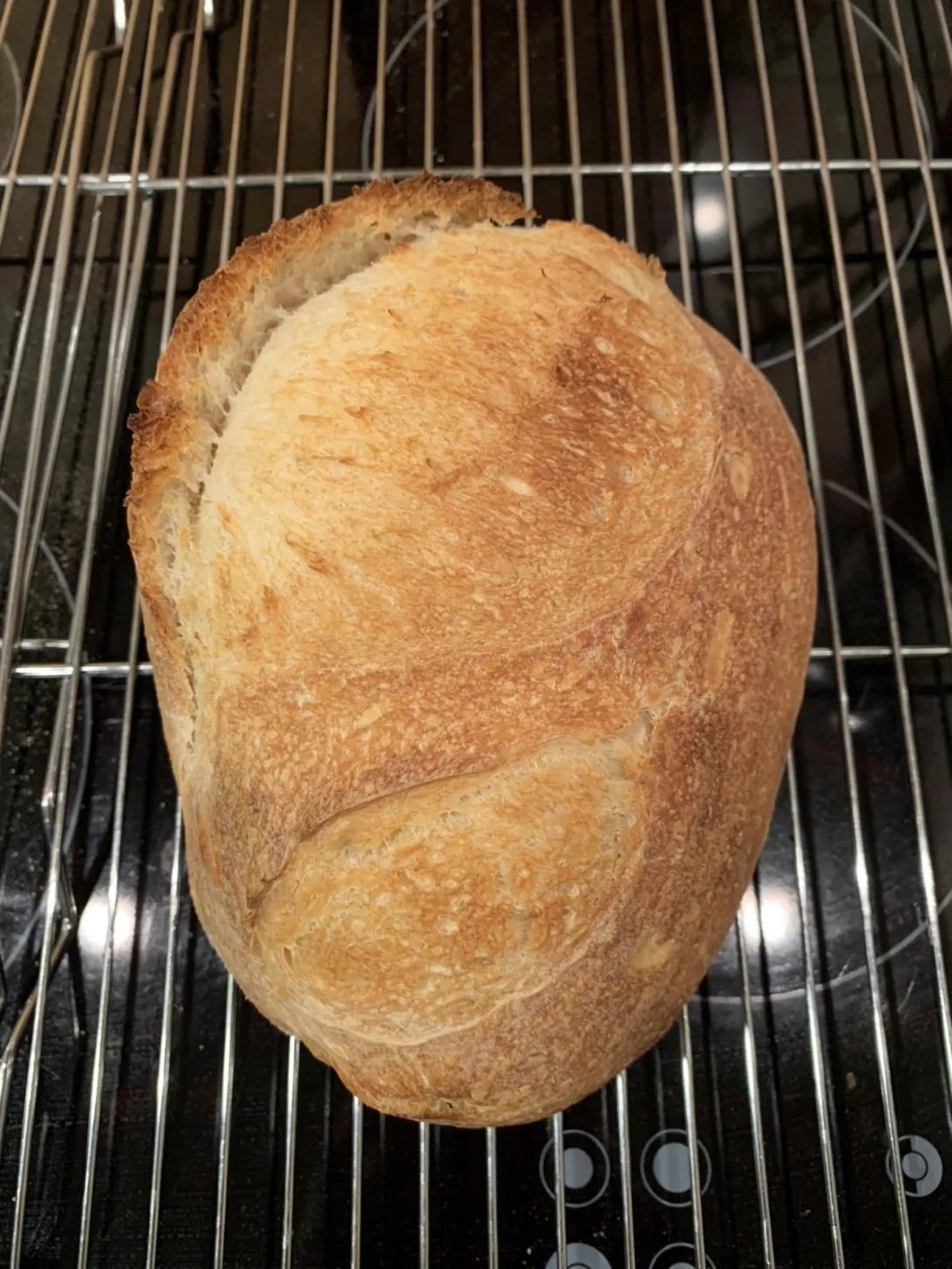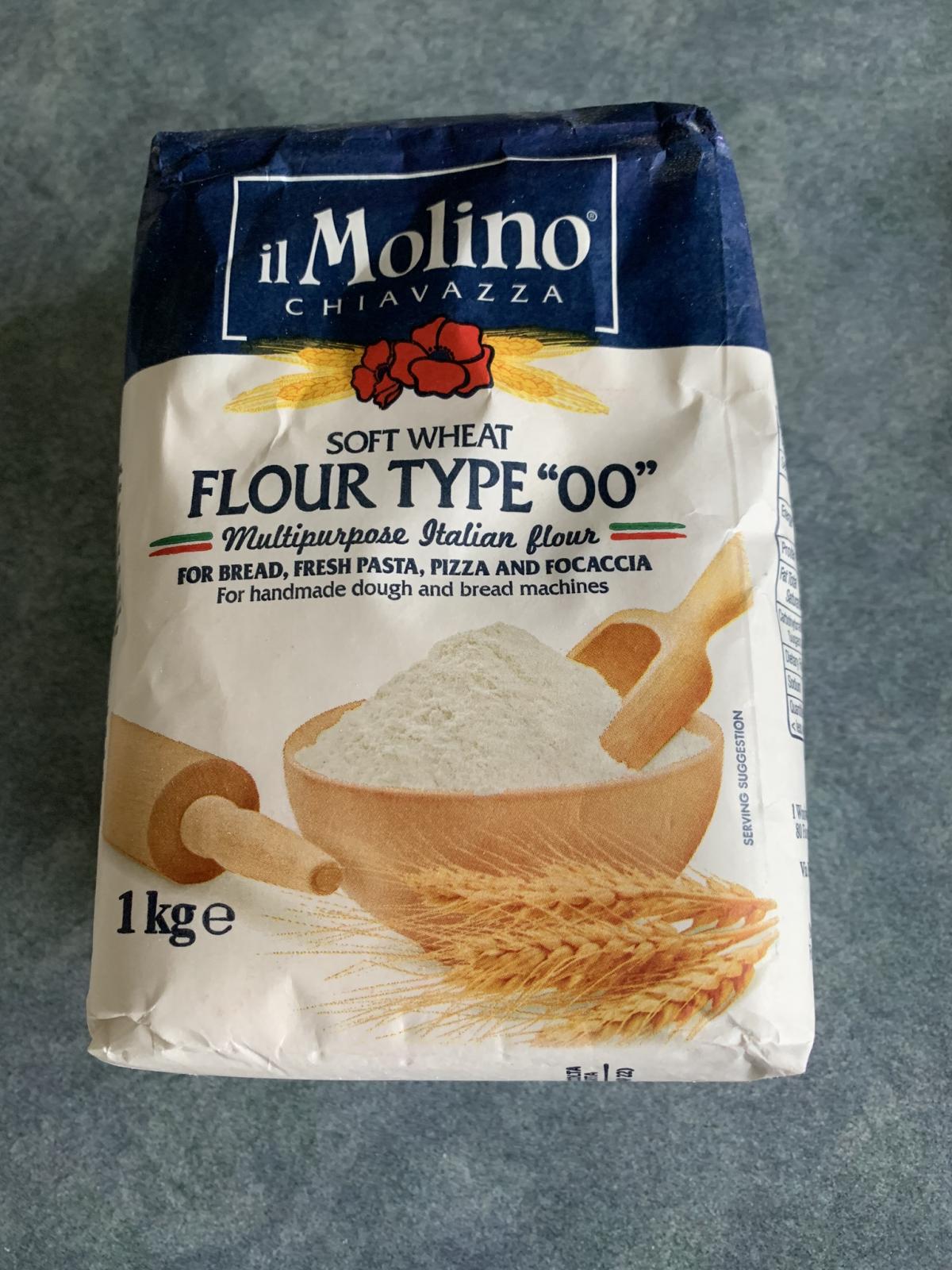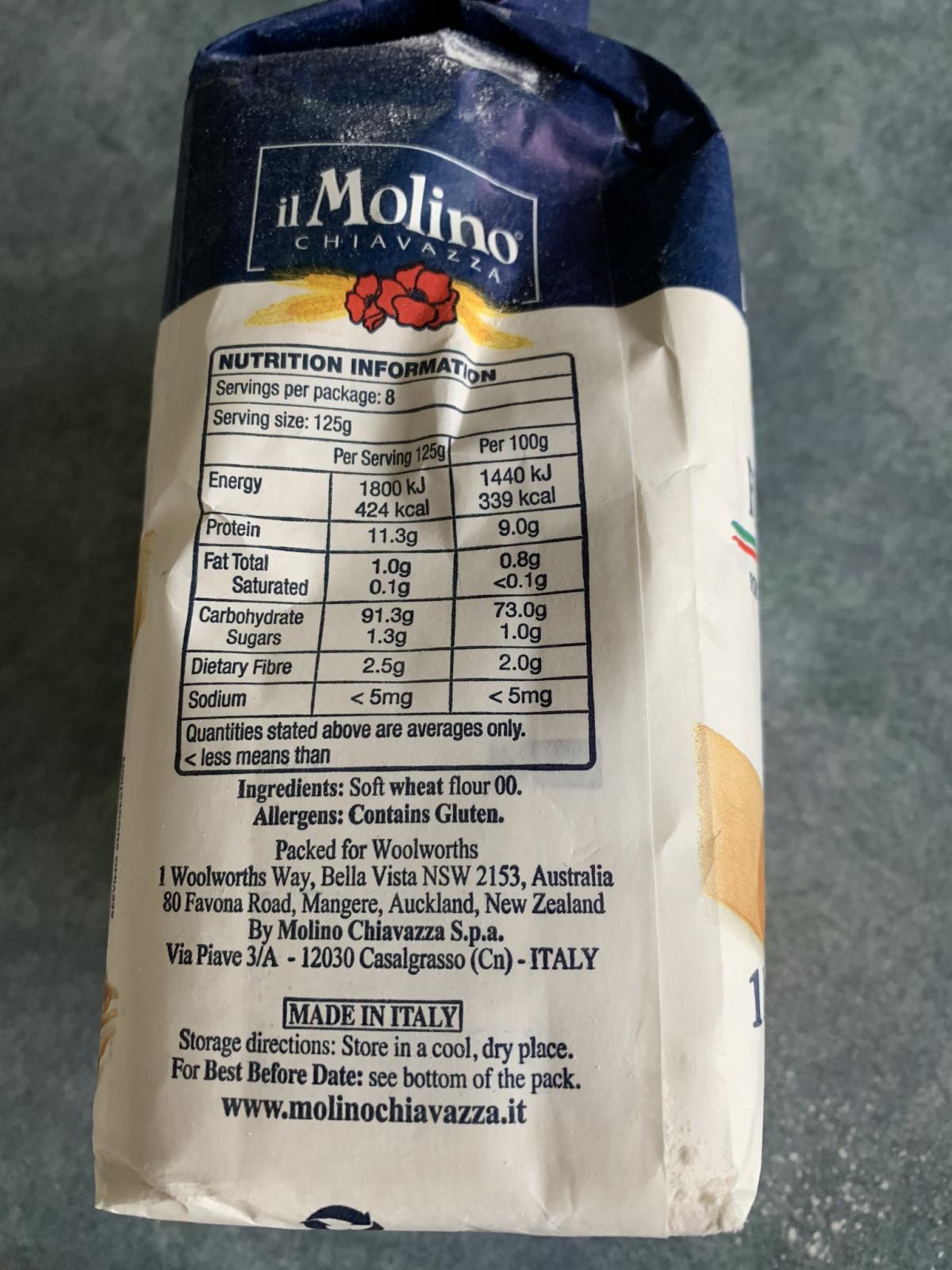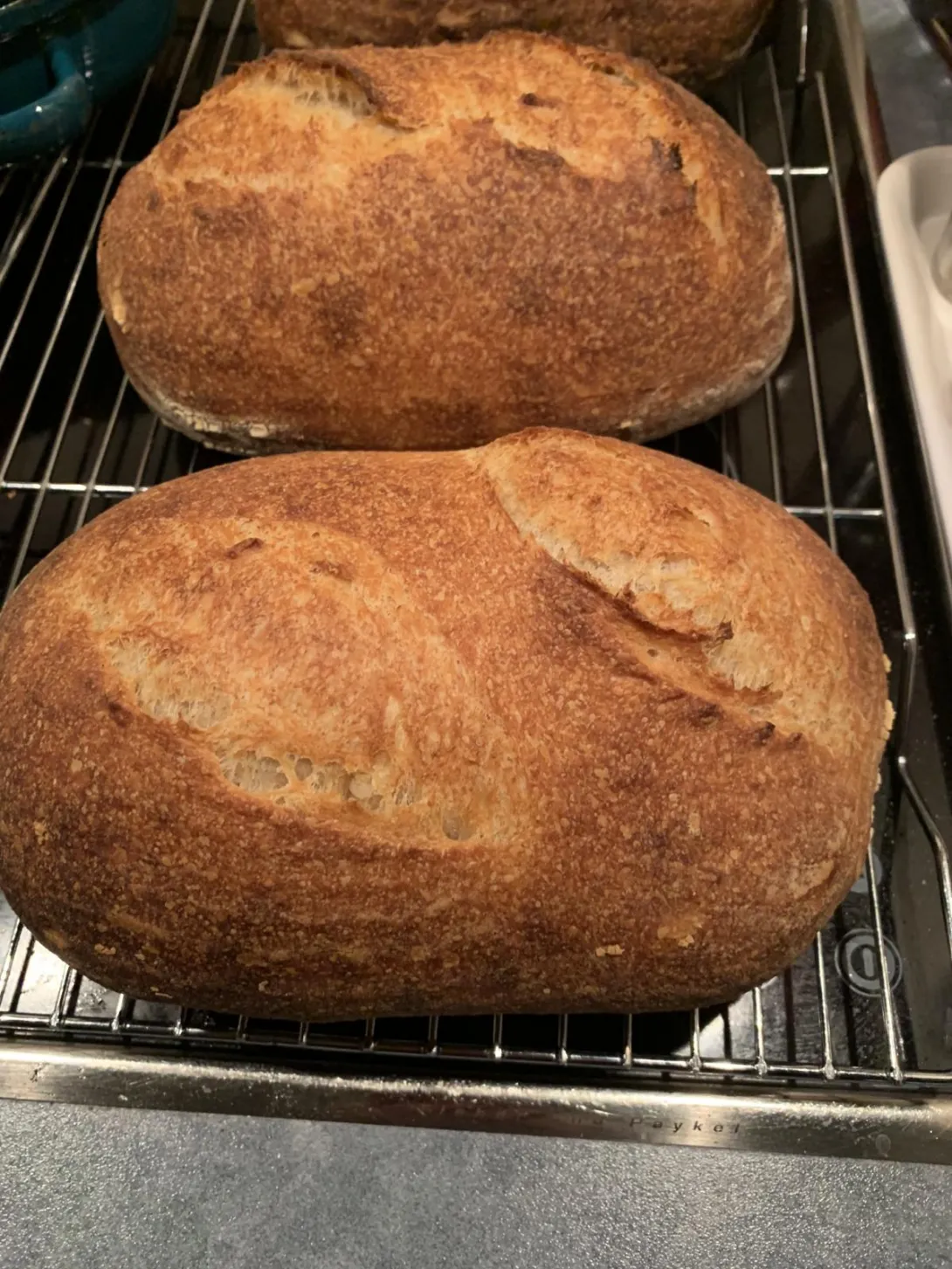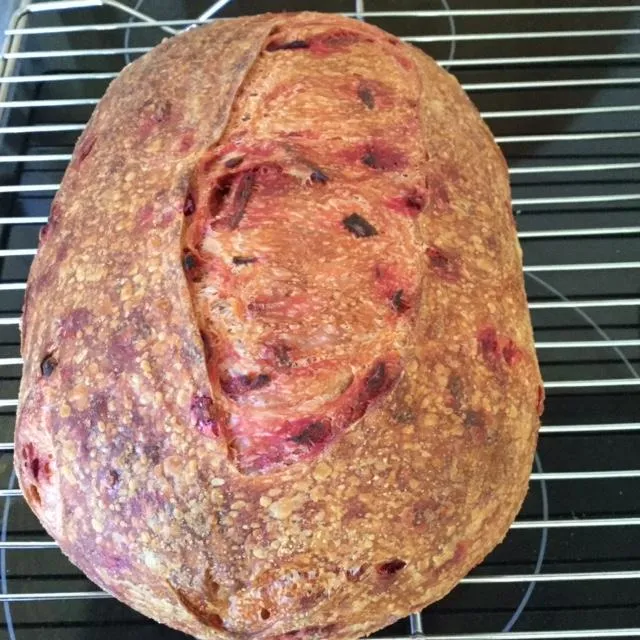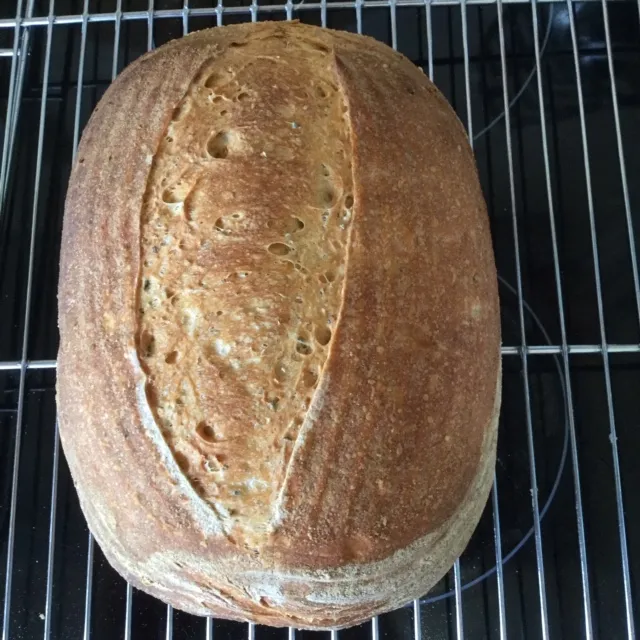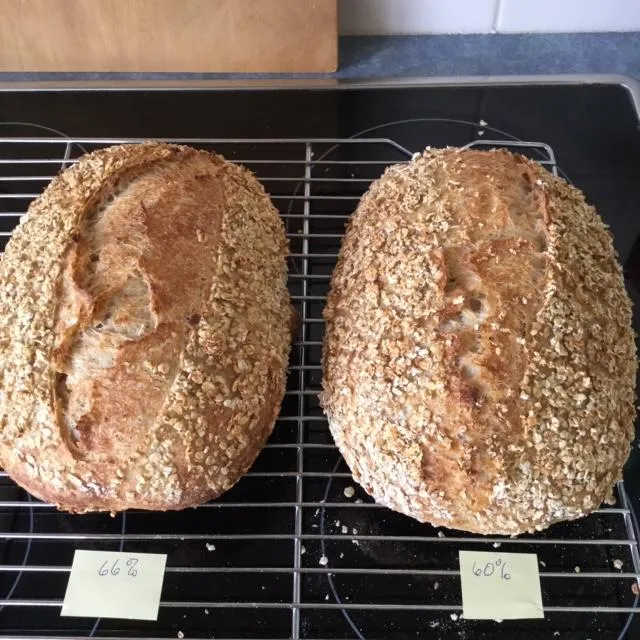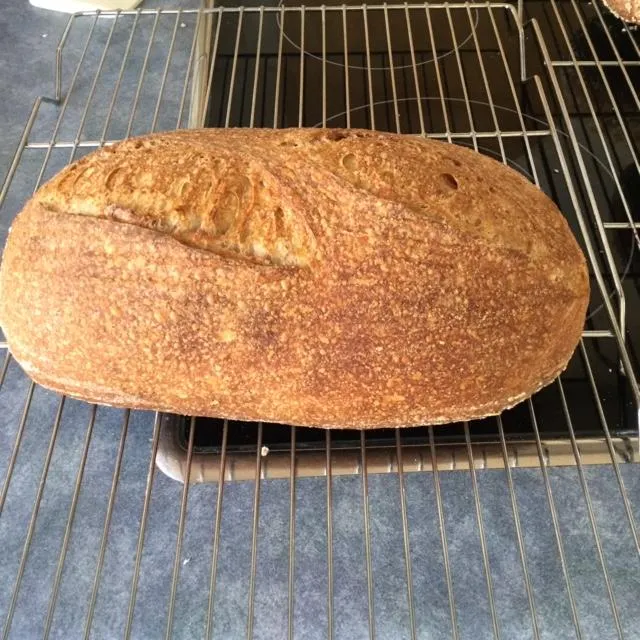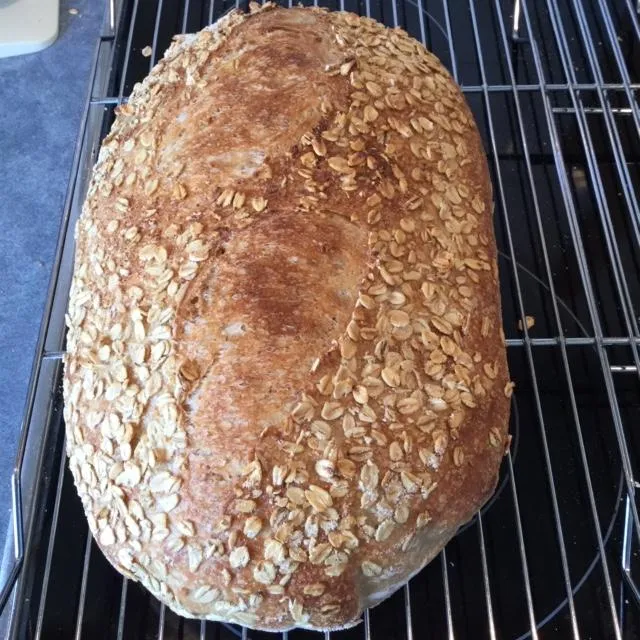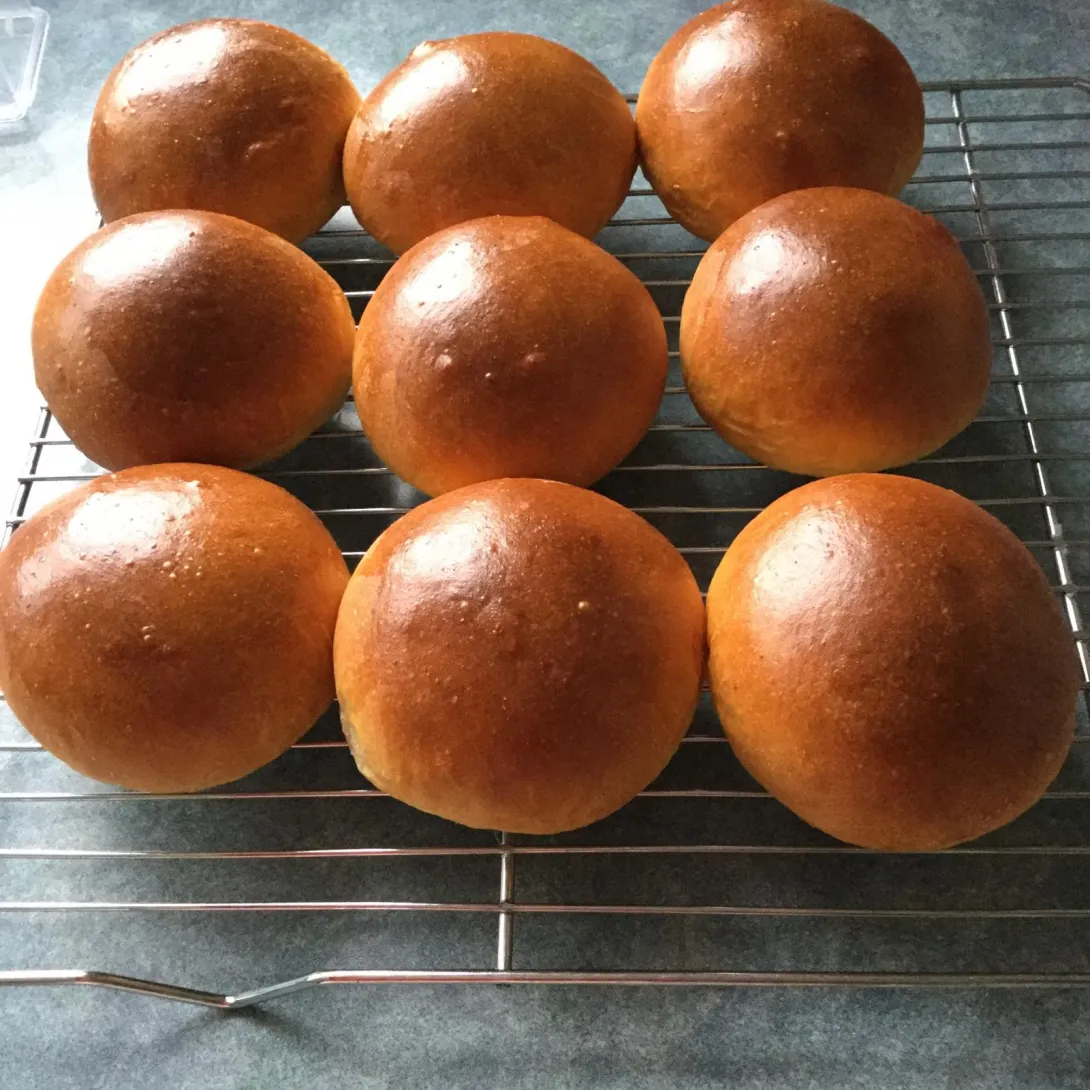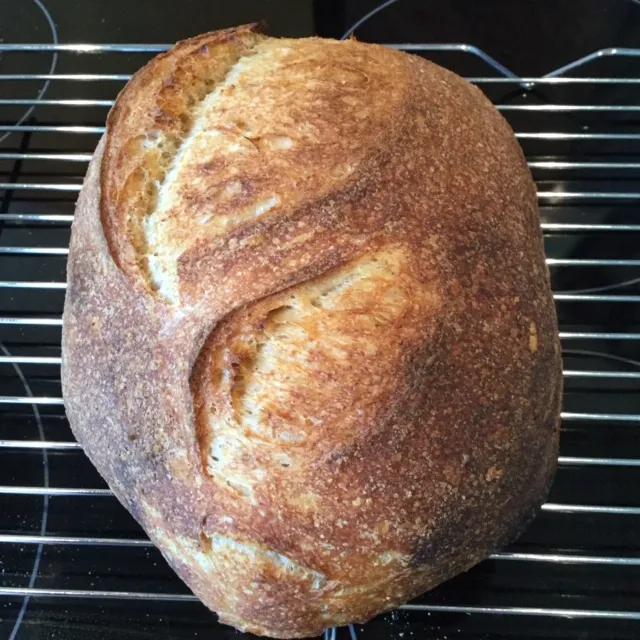Second attempt at Kirsten's formula (community bake)
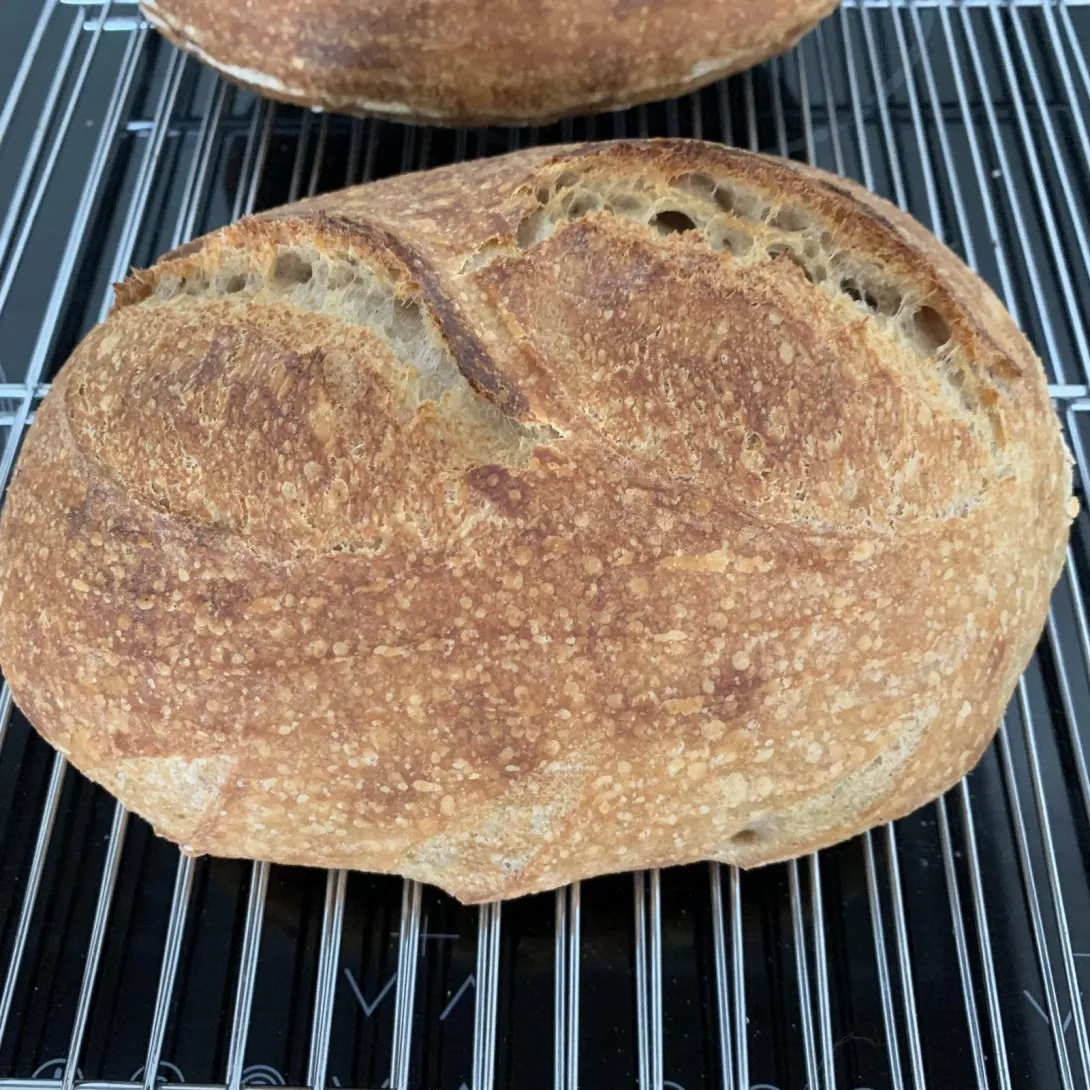
After my last attempt I decided to reduce the autolyse time and see if it helped. I made 2 x 600gm loaves - one had 1 hour autolyse, the other had 2 hour autolyse. I withheld 20 gms water in both and found this made a huge difference. I did 100 SLAFs, rested 5 minutes then added salt and did another 100 SLAFs.
- Log in or register to post comments
- 2 comments
- View post
- leslieruf's Blog
